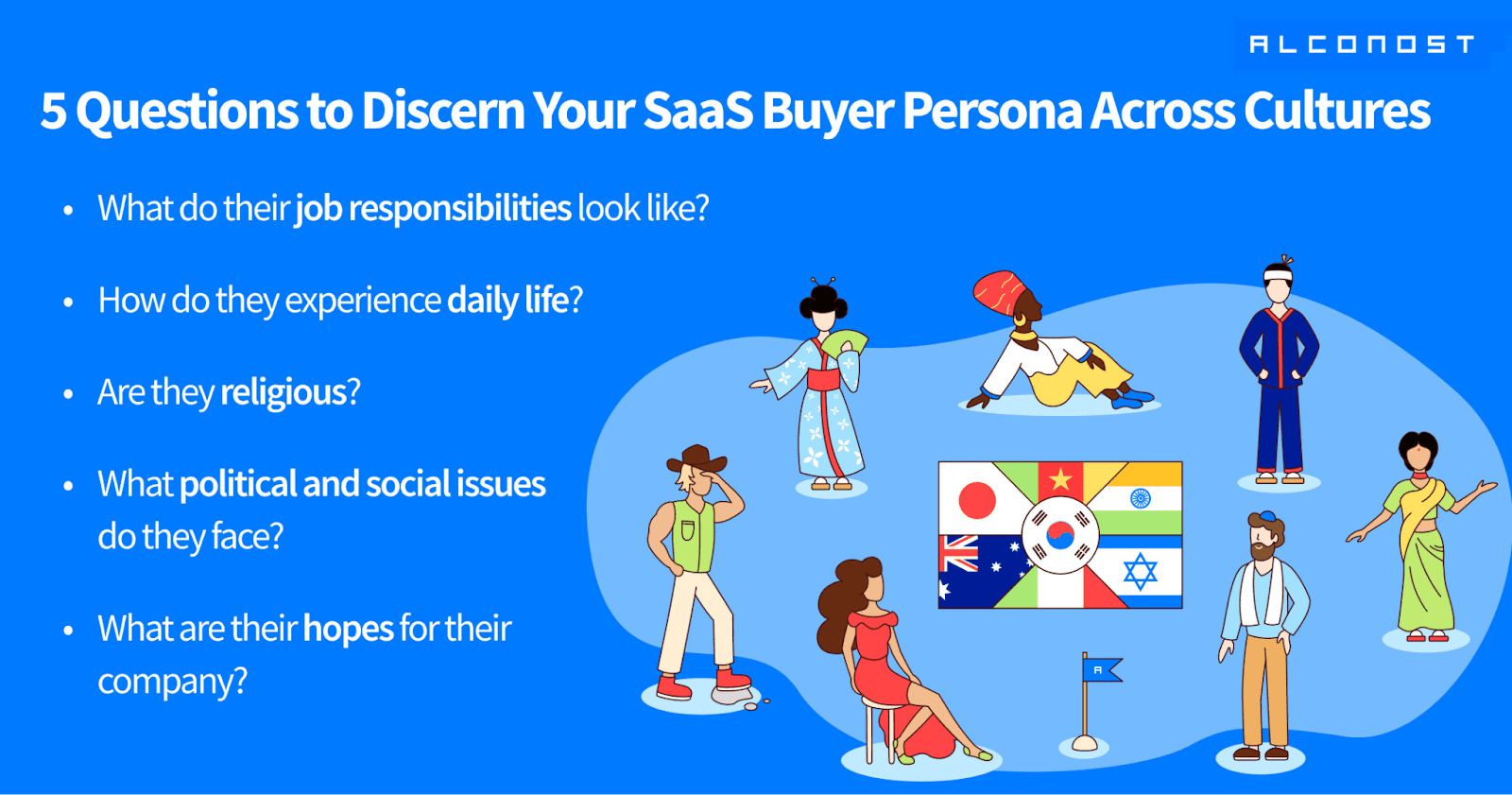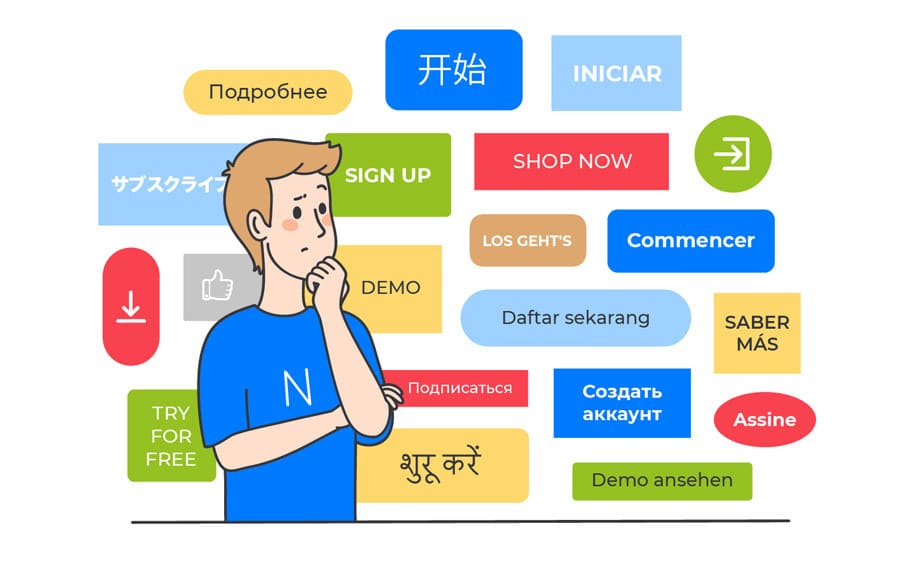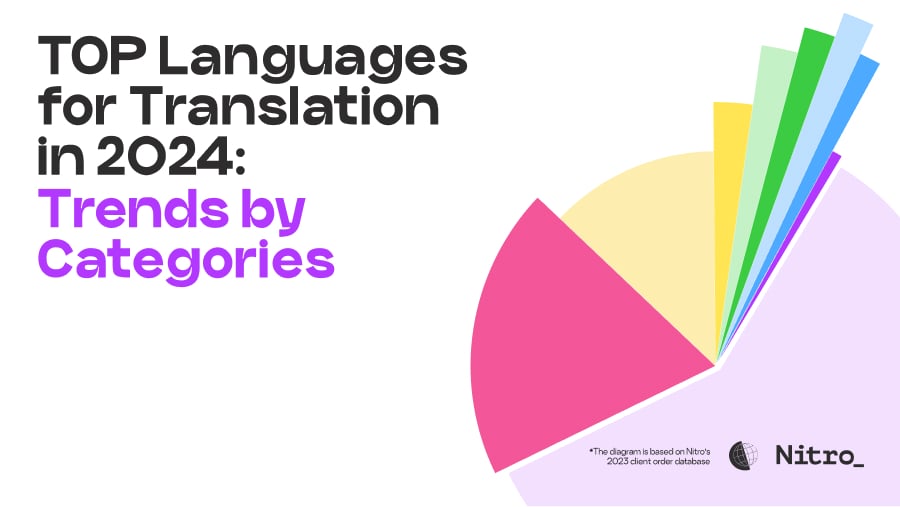As the market demand for cloud-based software continues to increase, competition between SaaS companies is heating up as well. Product and marketing teams are challenged with the question, "How can we reach and satisfy our audience more effectively?” And while you may consistently hit KPIs for your single-language product, it’s hard to exaggerate the massive market opportunity you get when your software offers multiple language versions.
Since SaaS applications range from CRMs to fintech solutions, from B2B to G2E business models, there’s no “one-size-fits-all” approach for localizing SaaS into new languages. There are however certain common tendencies and pitfalls that we’ve observed over 19 years of helping tech companies to win over international customers. We believe our expertise will save you time and money when your SaaS product is ready to enter new countries. Read on!
Key considerations you should take into account in SaaS localization
UI layout
SaaS products have a fair number of screens, buttons, toggles, icons, and other visual elements for users to interact with. Consequently, localizing the user interface becomes as important as translating the text itself.
One language that traditionally poses challenges for Western UI designers is Arabic. This language is among the twenty most popular languages for localization, with 358 million speakers in 25 countries and regions. Being a right-to-left language, Arabic presupposes a different visual pattern and way of perceiving information. The linear representation of progress and time are reversed: for example, images that demonstrate events are ordered from right to left.
But it would be a mistake to simply mirror every single element in your UI. RTL and LTR language cultures still share some common ways of presenting information. For example, the majority of users are right-handed regardless of their country of origin—that’s why cup handles would be placed to the right when using a cup icon, and clock hands would still rotate clockwise. Logos also remain unflipped, because they should be recognized the same way across countries.
There are other pitfalls when it comes to designing a multilingual interface. For example, Japanese, Chinese, and Korean characters are quite difficult to read at font sizes that are perfectly legible for Latin and Cyrillic languages such as French, Italian, and Ukrainian. If a SaaS product has been developed with internationalization in mind (no hardcoded strings, flexible design, etc.), issues like this are easily resolved.
Price localization
No matter how many prospects enter your marketing funnel, it’s not until they actually subscribe to your software that they become your actual customers. With this in mind, have you made the purchase process itself as seamless as possible?
The most basic thing you can do is to display prices using the local currency. You can allow users to select their country and currency on your website, but a better option is to automate currency display using geolocation technology based on the IP address. This frees prospects from needless additional actions or deliberation, and saves their attentional resources for actually making the decision to purchase. Less pain for them, more gain for you!
A more far-reaching form of price localization is to adjust your product pricing based on local customers’ purchasing power, perceived value of your software solution, and market saturation in the target region. This strategy ensures you don't price yourself out of the market. In some countries, sale and distribution of pirated goods is a common practice. Research shows that netizens in specific markets (even some markets that IT entrepreneurs tend to deem profitable) don’t mind using pirated software if the legal version is outside their budget. This means that customers in these countries are more sensitive to software pricing, and it makes sense to tailor your company’s pricing strategy to levels that the locals are used to.
Netflix is a great example of geographical pricing. The company tailors its pricing to the purchasing power of each country. The least expensive country for subscribing to their Premium plan is Pakistan: in 2022, it cost citizens $4.74. Switzerland and Liechtenstein are the costliest countries in which to enjoy Netflix: the company charges Swiss and Liechtensteiners $25.47 for their Premium library of almost 6,000 movies and TV shows.

Marketing strategy localization
To convert abroad like you do at home, you need to localize marketing touchpoints as well, and not just for landing pages or newsletter content. Here's a brief overview of what marketing localization really means to a SaaS product team.
Localizing your buyer persona
Ideally, you need to make sure your packaging and positioning are aligned to the buyer personas of the countries you’re entering. You need to understand who they are, what their routine looks like, and what issues they're facing. For example, what are the job titles and responsibilities of your prospective foreign customers? Titles for the same job description differ across countries. In some markets, for instance, the professionals you call Performance Marketing Managers are known as Targetologists, and that’s just the tip of the iceberg. When modeling your international clients’ work day, keep in mind that slight differences in the role structure may mean slight differences in daily duties and the challenges that your clients encounter that affect their behavior, pain points, and purchasing decisions.

You can think of buyer persona localization as market segmentation at scale. This helps to tailor your global campaigns to the ideal customer profile, attract more qualified leads, and consequently maximize your return on investment.
Localizing messaging
Consider the sociocultural context in which your prospects are living. Your messaging should at least conform to your audience’s social and cultural norms, laws, and religion, or—better yet—resonate with them.
In conservative societies, gender and sexual diversity themes in marketing communications may not be perceived positively. Some cultures are hierarchical and generally more formal (China, Japan), and have rules that govern interactions in the business setting. When you build your communication strategy for these cultures, you may need to adjust your brand voice a bit: for example, be careful with calling people by their first name, informal forms of address, and general levels of emotion.
Localizing marketing channels
What sources of information do your international clients use? Where do they text? What is the social media landscape in the target market?
For example, widespread Western platforms like Facebook, Twitter, and YouTube are blocked in China. To text each other, the Chinese use platforms called Wechat and Tencent QQ. Instead of Twitter and YouTube, they use micro-blogging platform Sina Weibo and video-sharing platform Youku Tudou. Despite owing its origin to Chinese company ByteDance, TikTok is blocked in China; instead, people there use another short video hosting platform called Douyin.
While WhatsApp is considered the world's most popular messaging app, it isn't always the top choice for chatting in particular regions. In Japan, Taiwan, and Thailand, users message each other using a platform called LINE. South Koreans widely use the messaging app Kakaotalk, and Telegram is the number one choice in countries such as Russia, Uzbekistan, and Brazil.
Localizing keywords
What words and phrasing will locals use when they search for your solution on Google? Keyword research is needed not only for each language, but also for each country.
- Real-life example: As a service provider that operates in multiple regions, we’ve encountered challenges with multilingual keyword promotion, too! In Spain, the word “localization” (localización) means geographical localization, or tracking. When Spanish clients google services for cultural and linguistic adaptation, they use the term “translation project manager/provider/company” (gestor de proyectos de traducción). The French use the word “localization” for games, and they look up “video game localization” (localisation jeux video). But for other technology products like on-premise and cloud-based software, the query in French is “translation” (traduction).
Localizing timing
Localize your holiday marketing campaigns so that they match local seasonal events, carnivals, and holidays. These are a great way to boost revenue, if used wisely!
Emails are another go-to marketing channel for SaaS businesses where timing is critical. Most emails are opened within one hour after delivery. If you send an email from San Francisco at noon, it reaches Paris at 9 PM. Your French subscribers might see it the morning of the next business day, but all the other emails that have piled up overnight will be competing for their attention.
Localizing your scaling strategy
Here, once again, you have to consider local purchasing power, buying behavior, and the economic context of the target country. Are the customers in your target market ready to pay more for a higher-end product with better functionality, considering their income level? In other words, will you be upselling your Standard plan customers to a Premium subscription, or should you instead focus on cross-selling or expanding your base of Standard plan users?
User support in local languages
Because it’s easy for SaaS users to switch service providers by merely canceling their subscription, your goal is to maximize the value of their purchase and keep them consistently satisfied as they use your software. Multilingual user support and even localized tutorial videos will help you to prevent drop-offs in the event of user errors and general questions regarding how to use your product.
- The most effective way to ensure personalized case-by-case support is to hire native-speaking agents who operate within the target country’s time zone.
- If this option is outside your budget, consider implementing automated solutions like multilingual chatbots, or AI-powered self-service assistants.
- Another option is to create a comprehensive multilingual knowledge base that includes help documentation, frequently asked questions, how-to guides, and other support materials.
Choosing SaaS localization vendor: 3 essential factors to consider for quality results
1. Check the vendor’s rating on different platforms
Your prospective localization vendor’s rating on a B2B review platform gives you a free and unbiased glimpse of what it’s like to be their customer. We recommend the following websites for B2B tech service insights:
Another popular B2B review platform, Clutch, annually announces their Top Global Business Services Providers, where they shortlist 15 companies per category (including Translation) as the top-performing industry leaders.
2. Choose by niche expertise
Your ideal SaaS localization team will consist of native-speaking linguists with expertise in your industry, and a localization project manager who sets the deadlines, monitors the processes, and keeps the lines of communication open and clear between you and the translators.
You get the best of all worlds when the localization vendor provides you with translators who understand your technology (such as software), the concept of register (informal friendly narrative, business-like tone of voice, etc.), and your particular SaaS niche (property management, social media analytics, CRM, etc.). While this combination may sound too good to be true, it’s actually quite common for a vendor with 500+ translators in their pool to source the perfect team for you.
3. Buy a process, not a single service
When you decide to outsource localization to a vendor, you're no longer “buying” just a team of professional translators—you're buying the seamless integration of localization into your production workflow. When automating your business processes, here are some questions to clarify with your prospective localization service provider:
- What translation management system do they use? How flexible are they with their toolkit?
- If you already have a business ecosystem, are they able to integrate the localization process into it?
- How do they ensure continuous localization for frequently updated projects?
Putting together a dedicated team is half the localization battle; implementing an effective toolkit for productive collaboration is the other half. Translation management systems often provide tools for reporting issues, which come in handy when you need to request corrections to the translation, or if you just have a general question. Translators can also use them to make their own comments, express concerns, or ask for additional context. This way, both the vendor’s team and your own can keep a finger on the pulse of each step of the localization journey.
Once your growing SaaS moves beyond a single locale, it’s essential to choose a vendor that is able to deliver timely localization of frequent updates. Change is an integral part of a growing business—you receive user feedback, you analyze user behavior, and you make improvements to your product. To play the long game of customer retention, you need to make sure your international customer base has access to the same benefits as users of the original language version. So be sure to look into how your vendor handles continuous localization of ongoing projects.
Long-term collaboration with a localization vendor needs to provide you with a single convenient place to translate a website, an interface, technical documentation, or even record a multilingual voice-over for your demo videos. Choose your service provider carefully. When in doubt, here’s a little lifehack: place a small test translation order. That way you’ll get to experience the vendor’s methodology and tools with no commitment, and see whether they're the right match for your SaaS solution's current and future needs.










